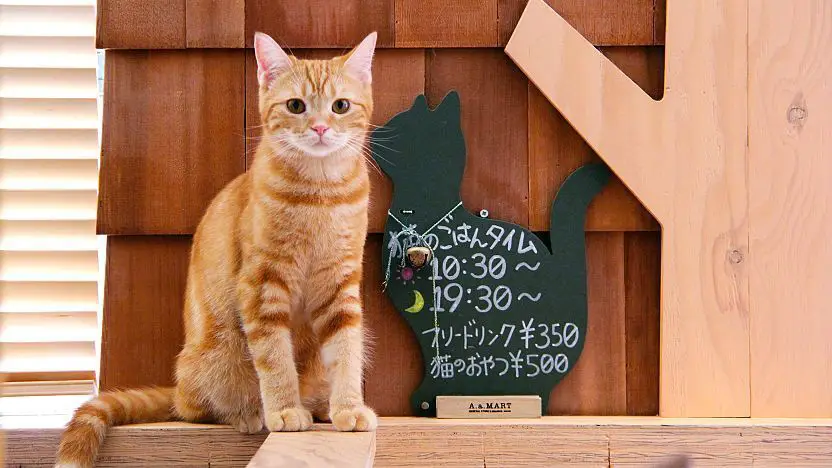Japanese has many different words to refer to cats, depending on factors like the cat’s age, size, and personality. While the basic Japanese word for cat is “neko” (猫), other common words include “mikeneko” for a female cat, “koneko” for a kitten, and “nyaasu” which stems from the Japanese cat sound “nyaa.” The multiple Japanese words for cat highlight the importance and cultural meaning of cats in Japan.
Neko
The most common Japanese word for “cat” is “neko” (https://japaneseparticlesmaster.xyz/neko-in-japanese/). “Neko” is derived from the onomatopoeic word “nyā”, which imitates the meowing sound cats make in Japanese. This is similar to the English word “meow.”
“Neko” can be written using the hiragana ねこ or katakana ネコ. It is pronounced “neh-koh” with an accent on the first syllable. According to Japanese folklore, cats beckon prosperity and good fortune. They are considered dear pets and are treated with care.
Mike

Mike (ミケ) is one common way to say “male cat” in Japanese. The kanji characters are 三毛, which literally mean “three fur.” This refers to the calico fur pattern that is often seen in male cats in Japan.
According to How do you write “mike” in Japanese?, “A calico cat is called 三毛 (mike). The characters individually mean “3” and “fur.” Calico cats have patches of fur in three colors, usually orange, black and white.”
Another source, Mike In Japanese | Spanish to Go, provides additional context: “In Japanese, “Mike” is written using the kanji 三毛 (sanke). It directly translates to “three fur,” referring to the tri-colored fur of calico cats. Mike is commonly used to refer specifically to male calico cats.”
Meko
Meko (メコ) is a name for a female cat in Japanese. The kanji 女子 literally means “woman; girl; daughter” and is read as meko in Japanese.1 It is used as a slang term referring to a female cat or kitten.1
As a pet name, Meko can be used for a female cat. It signifies the cat’s gender while also being a cute name to call a cat.2 The name Meko evokes femininity when used for a cat.3
Koneko
“Koneko” (こねこ) is a common Japanese word for a kitten or young cat. The word literally translates to “child cat.” Koneko is the Japanese word for ‘kitten’, explained
In anime, manga, and other media, “koneko” is sometimes used as a name or nickname for catgirls and other cat-themed characters. For example, the character Koneko Toujou in the anime/manga series High School DxD has this nickname since she has cat ears and exhibits some cat-like behaviors.
The “ko” (子) part of koneko means “child” and the “neko” (猫) part means “cat.” So put together, koneko depicts a baby or young cat. This distinguishes it from the more general terms for cat in Japanese like neko or mii.
Koneko is considered cute or affectionate when referring to a kitten. However, it would usually not be used for adult cats. There are some exceptions like catgirls who may keep the nickname koneko even when grown up.
Nyaasu
Nyaasu (ニャース) is the official Japanese name for Meowth in the Pokémon franchise. The name is derived from the Japanese onomatopoeia “nya” which approximates the sound a cat makes, similar to “meow” in English. In Japanese pop culture, cats are often associated with making an “nya” sound.
For example, the Pokémon fansite Bulbapedia explains how the name Nyaasu directly imitates a cat’s meow in the Japanese language. So while the English name relates to the animal itself (“Meowth”), the Japanese name is an onomatopoeia representing the sound.
Pronunciation
There are a few common ways to say “cat” in Japanese:
Neko – This is the most common word for “cat” in Japanese. It is pronounced “neh-koh”. The emphasis is on the “neh” syllable.
Mike – An alternate reading of the kanji 猫 (meaning cat) is “mike”. It is pronounced “mee-kay”. The emphasis is on the “mee” syllable.
According to the YouTube video “How to pronounce Cat in japanese”, mike is a less common pronunciation and neko is more widely used.[1]

Meko – This is a variant of “mike” and is pronounced “meh-koh”.
Koneko – This is a compound word meaning “kitten” and is pronounced “koh-neh-koh”.
Nyaasu – This is an onomatopoeia for a cat’s meow. It is pronounced “nyah-soo”.
The most important pronunciation to remember is “neko” for cat. Listen closely to native speakers to pick up on the proper inflection and emphasis of the different words.
In sentences
Here are some example sentences using the Japanese words for cat:
Neko wa kawaii desu. – The cat is cute.
Watashi no ie ni wa shiroi neko ga imasu. – I have a white cat at home.
Kon’nichiwa, Mike! – Hello, Mike! (using name Mike for cat)
Koneko wa oishii tabemono wo tabete imasu. – The kitten is eating delicious food.
Nyaasu wa nezumi wo oikakete imasu. – Meow is chasing a mouse. (using Nyaasu for the cat’s name)
Cultural Context
Cats have long been an important part of Japanese culture and folklore. In ancient Japan, cats were seen as guardians and protectors. According to Japanese legend, a cat monster called the kasha was believed to protect against fire. The kasha had the body of a cat and was thought to take away bodies of the dead to the afterlife. Cats are also revered for protecting precious manuscripts and scrolls from rodents in ancient Japanese temples and palaces.

Even today, cats continue to play an important cultural role in Japan. For example, Maneki-neko, the beckoning cat figurine, is believed to bring good fortune to businesses. Entire islands like Tashirojima are populated almost entirely by cats. Cat cafes, where people can interact with cats while enjoying a drink, have also become popular in Japan as a way to relieve stress.
Overall, cats have a cherished place in Japanese legend and contemporary culture. They are seen as bringers of good luck and prosperity.

Conclusion
In summary, there are several common ways to say “cat” in Japanese. The most universal word is neko, but other variations like mike, meko, koneko, and nyaasu are also used, especially for baby cats or in cuter contexts. While neko is a good standard word to know, being familiar with some of the other cat names can help you sound more natural in Japanese conversations about our feline friends.
Cats hold an esteemed place in Japanese culture, often being revered and spoiled. Knowing the different Japanese cat terms and using the appropriate ones for context allows you to better understand and participate in this culture. With practice, saying “cat” in Japanese can become second nature.
